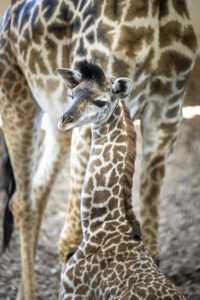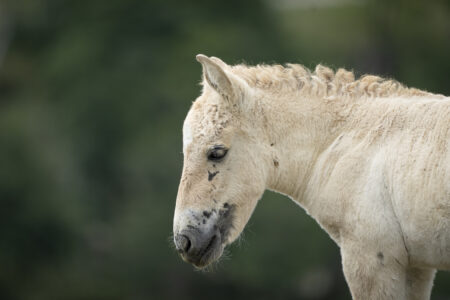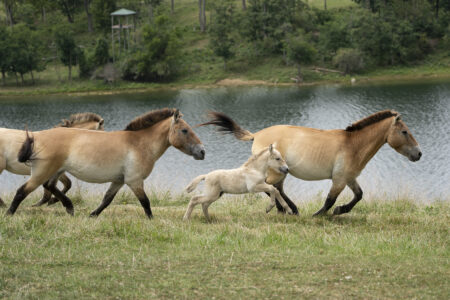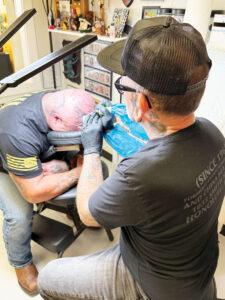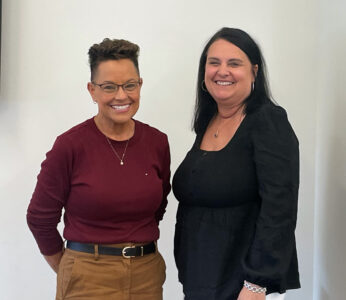Celebrating milestones: Przewalski’s horse, giraffe born at The Wilds
- On Aug. 27, The Wilds welcomed a Masai giraffe calf to mother, Lulu, and father, Raha. (Photo provided)
- The Przewalski’s horse (pronounced shuh-VAL-skee) foal was born on Aug. 9 to first-time mother Paisley and father Maksim. (Photo provided)
- The giraffe calf, Lulu and Raha are spending time in the barn for extra warmth as temperatures drop overnight, but they may be seen in the Giraffe Barn during Wildside Safari Tours. (Photo provided)
- The Przewalski’s horses—including Paisley, her foal and other members of the herd—are well adapted to cooler temperatures like those of their native range and may be seen out in pasture during an Open-Air Safari tour. (Photo provided)
- The new foal is the 26th surviving Przewalski’s horse born at The Wilds and the first since 2015. (Photo provided)
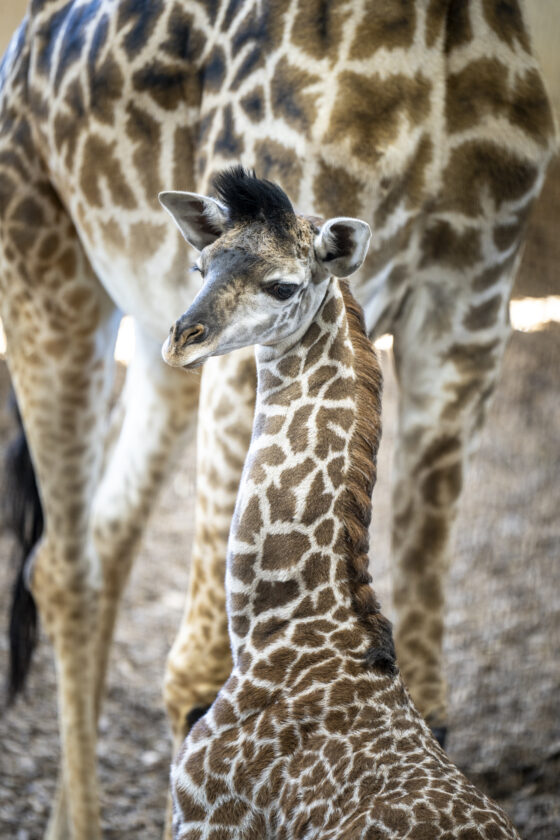
On Aug. 27, The Wilds welcomed a Masai giraffe calf to mother, Lulu, and father, Raha. (Photo provided)
CUMBERLAND — The Wilds is celebrating the births of a Przewalski’s horse and Masai giraffe at the Muskingum County conservation center and adventure park.
The Przewalski’s horse (pronounced shuh-VAL-skee) foal was born on Aug. 9 to first-time mother Paisley and father Maksim.
Paisley was born at the San Diego Safari Park in 2013 and arrived at The Wilds from the Minnesota Zoo in 2023. Maksim, born in 2017 at the Minnesota Zoo, came to The Wilds in 2024 from the Smithsonian’s National Zoo & Conservation Biology Institute in Front Royal, Virginia, based on a recommendation from the Association of Zoos and Aquariums’ Species Survival Plan. That program is designed to ensure the genetic health and diversity of threatened and endangered species in professional care.
According to a release from The Wilds, this birth carries special meaning, as the Przewalski’s horse was the very first species brought to the conservation center in 1992, before opening to the public for tours in 1994.
The new foal is the 26th surviving Przewalski’s horse born at The Wilds and the first since 2015. Known as the last truly wild horse, the species went extinct in the wild in the 1960s and survives today thanks to animals in professional care. Several successful reintroductions into China and Mongolia have helped restore wild populations, and The Wilds continues to play a role in their long-term recovery. As of mid-2025, there are only an estimated 2,000 to 2,500 Przewalski’s horses in the world, including populations in zoos, national parks and reintroduction areas in Mongolia, China and Russia, with ongoing efforts also underway in Kazakhstan.

The Przewalski’s horse (pronounced shuh-VAL-skee) foal was born on Aug. 9 to first-time mother Paisley and father Maksim. (Photo provided)
On Aug. 27, The Wilds welcomed a Masai giraffe calf to mother, Lulu, and father, Raha.
This is the fourth calf for Lulu, who was born at the Cincinnati Zoo & Botanical Garden in 2012, and has lived at The Wilds since 2014. Raha, born at the Los Angeles Zoo and Botanical Gardens in 2006, arrived from the Pittsburgh Zoo & Aquarium in 2009 and has now sired 13 calves at The Wilds.
This pairing was also an SSP recommendation, and the calf’s birth represents an important step forward for the conservation of Masai giraffes, the release said.
“These births are wonderful milestones for The Wilds and for the conservation of these species that face significant challenges in their native ranges,” said Dr. Jan Ramer, senior vice president of animal care and conservation at the Columbus Zoo and The Wilds. “They also provide us with the opportunity to share impactful stories with our guests, who play an important role in protecting wildlife by supporting our mission of ’empowering people, saving wildlife.”
Masai giraffes are listed as endangered by the International Union for Conservation of Nature, with populations declining by nearly 50% over the last three decades due to habitat loss, poaching and ecological changes.
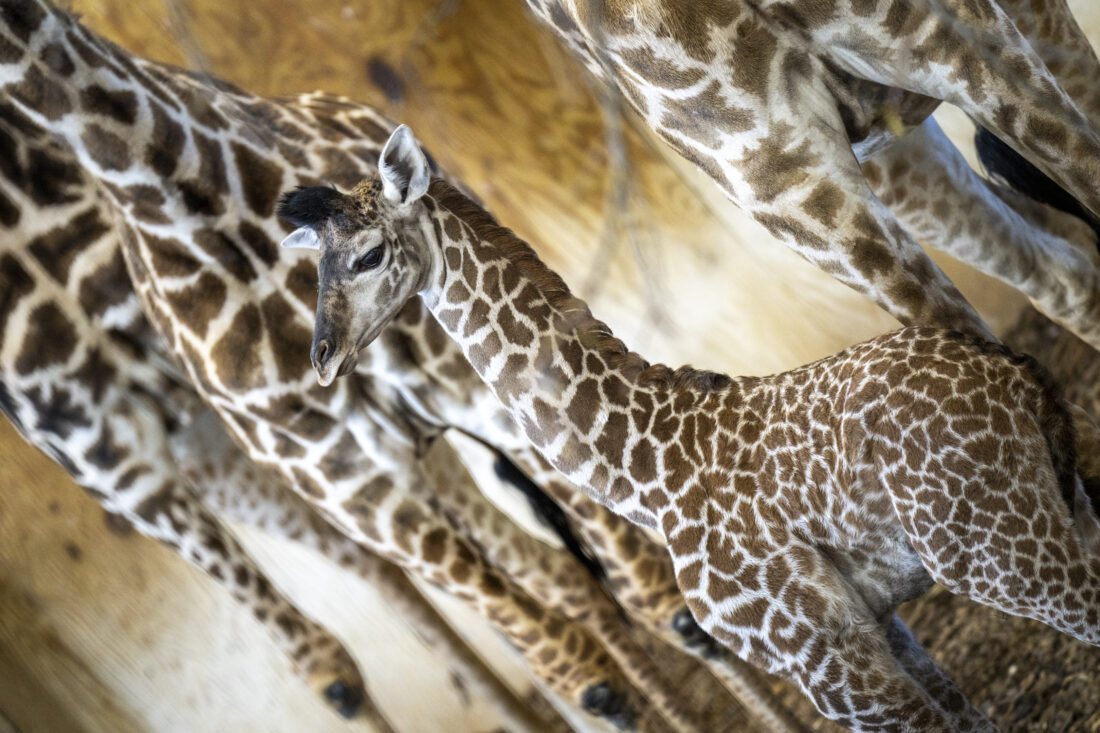
The giraffe calf, Lulu and Raha are spending time in the barn for extra warmth as temperatures drop overnight, but they may be seen in the Giraffe Barn during Wildside Safari Tours. (Photo provided)
Przewalski’s horses are also classified as endangered, yet their ongoing recovery through professional care and reintroduction programs is considered one of conservation’s greatest success stories, the release said.
The giraffe calf, Lulu and Raha are spending time in the barn for extra warmth as temperatures drop overnight, but they may be seen in the Giraffe Barn during Wildside Safari Tours. The Przewalski’s horses–including Paisley, her foal and other members of the herd–are well adapted to cooler temperatures like those of their native range and may be seen out in pasture during an Open-Air Safari tour. Open-Air Safaris are presented by G&J Pepsi.
More information about tours, conservation initiatives, events and educational opportunities is available online at TheWilds.org or through The Wilds’ social media accounts.

The Przewalski’s horses—including Paisley, her foal and other members of the herd—are well adapted to cooler temperatures like those of their native range and may be seen out in pasture during an Open-Air Safari tour. (Photo provided)
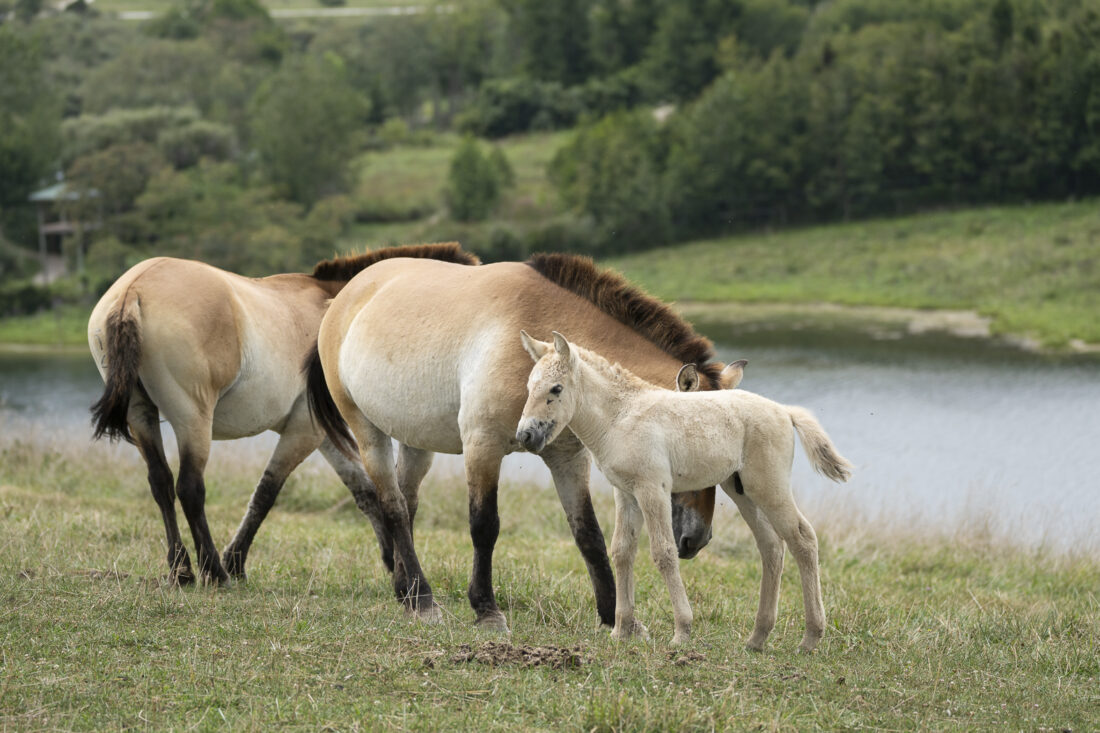
The new foal is the 26th surviving Przewalski’s horse born at The Wilds and the first since 2015. (Photo provided)

